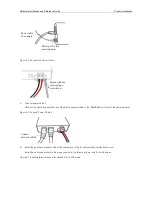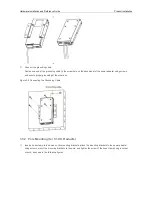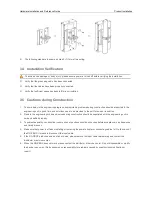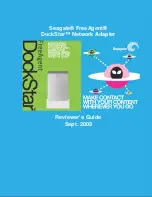
Hardware Installation and Reference Guide
Preparation before Installation
2.2.7 EMI Consideration
Various interference sources, from either outside or inside the equipment or application system, affect the system in the
conductive ways such as capacitive coupling, inductive coupling, and electromagnetic radiation.
There are two types of electromagnetic interferences: radiated interference and conducted interference, depending on
the type of the propagation path. When the energy, often RF energy, from a component arrives at a sensitive
component via the space, the energy is known as radiated interference. The interference source can be both a part of
the interfered system and a completely electrically isolated unit. Conducted interference results from the
electromagnetic wire or signal cable connection between the source and the sensitive component, along the cable the
interference conducts from one unit to another. Conducted interference often affects the power supply of the equipment,
but can be controlled by a filter. Radiated interference may affect any signal path in the equipment, and is difficult to
shield.
Effective measures should be taken for the power system to prevent the interference from the electric grid.
The working ground of the routers should be properly separated and kept as far as possible from the grounding
device of the power equipment or the anti-lightning grounding device.
Keep the equipment away from high-power radio transmitter, radar transmitting station, and high-frequency
large-current device.
Measures must be taken to isolate static electricity.
2.3 Installation Tools
Common Tools
Cross screwdriver, straight screwdriver, related electric and optical cables
Bolts, diagonal pliers, straps
Special Tools
Anti-static tools
Meter
Multimeter
The tool kit is customer supplied.




































